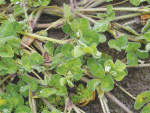There have been negativities around farmers saying the sheep sector is declining.
Farmers are noting that the sheep flock is down to 28 million and returns aren’t good enough, says BLNZ chair James Parsons.
“However, right now we are running at our five year average for lamb per kilo of carcase weight,” he says. “It is not stellar, but in terms of averages we are ticking along okay.”
Meanwhile, Parsons says he has a “shed full” of wool on his farm that he hasn’t yet sold, but wool is always up and down.
“It is a commodity: China suddenly decides to stop buying and the price falls [but] in 12 months they will be back into it and the price will be up.”
Beef has been an interesting one: the schedule for bull was about $3.30/kg five years ago and is now sitting at $5.20/kg.
“The beef prices have really come up so we are seeing a lot more interest and probably have a bit more beef production and are decreasing sheep flocks,” he adds.
“We haven’t seen a big shift to dairy in the last couple of years understandably…. Some of the environmental regulations coming in are putting a dampener on those dairy conversions.”











